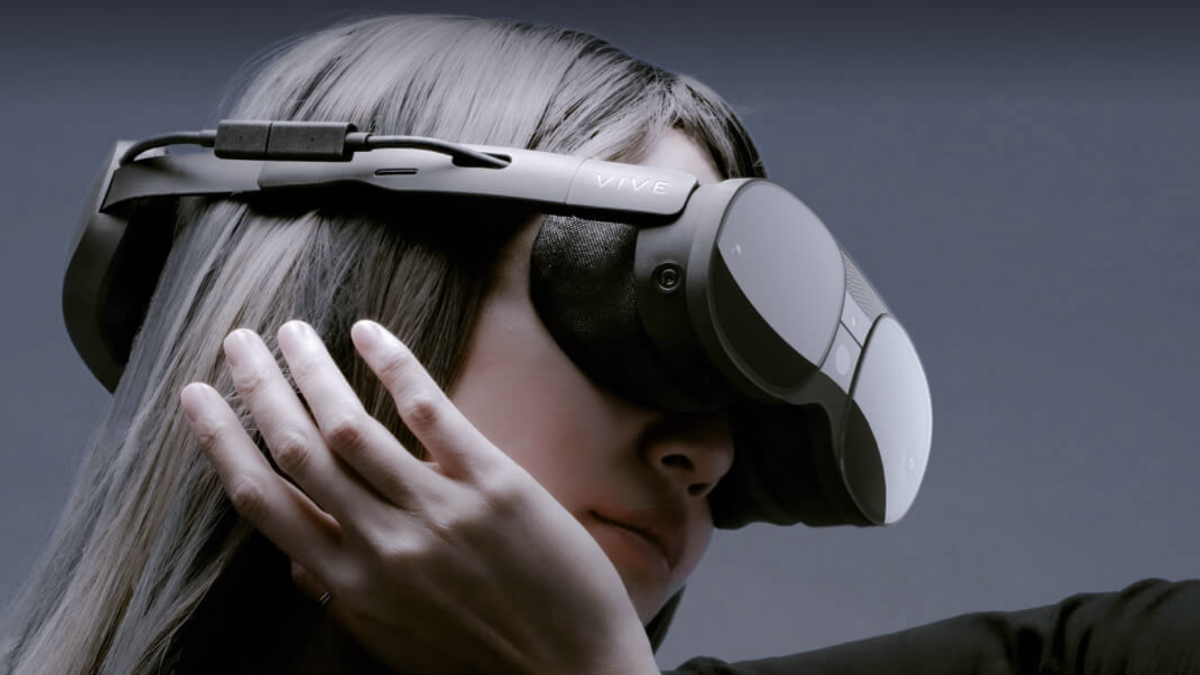
Is the metaverse closer than we think?
It depends on who you ask at CES, where companies are showing off innovations that could immerse us deeper into virtual reality, otherwise known as VR.
The metaverse — essentially a buzzword for three-dimensional virtual communities where people can meet, work and play — was a key theme during the four-day tech gathering in Las Vegas that ends Sunday.
Taiwanese tech giant HTC unveiled a high-end VR headset that aims to compete with market leader Meta, and a slew of other companies and startups touted augmented reality glasses and sensory technologies that can help users feel — and even smell — in a virtual environment.
Among them, Vermont-based OVR Technology showcased a headset containing a cartridge with eight primary aromas that can be combined to create different scents. It’s scheduled to be released later this year.
An earlier, business-focused version used primarily for marketing fragrances and beauty products is integrated into VR goggles and allows users to smell anything from a romantic bed of roses to a marshmallow roasting over a fire at a campsite.
The company says it aims to help consumers relax and is marketing the product, which comes with an app, as a sort of digital spa mixed with Instagram.
“We are entering an era in which extended reality will drive commerce, entertainment, education, social connection, and wellbeing,” the company’s CEO and co-founder Aaron Wisniewski said in a statement. “The quality of these experiences will be measured by how immersive and emotionally engaging they are. Scent imbues them with an unmatched power.”
But more robust and immersive uses of scent — and its close cousin, taste — are still further away on the innovation spectrum. Experts say even VR technologies that are more accessible are in the early days of their development and too expensive for many consumers to purchase.
The numbers show there’s waning interest. According to the research firm NPD Group, sales of VR headsets, which found popular use in gaming, declined by 2 percent last year, a sour note for companies betting big on more adoption.
Still, big companies like Microsoft and Meta are investing billions. And many others are joining the race to grab some market share in supporting technologies, including wearables that replicate touch.
Customers, though, aren’t always impressed by what they find. Ozan Ozaskinli, a tech consultant who traveled more than 29 hours from Istanbul to attend CES, suited up with yellow gloves and a black vest to test out a so-called haptics product, which relays sensations through buzzes and vibrations and stimulates our sense of touch.
Ozaskinli was attempting to punch in a code on a keypad that allowed him to pull a lever and unlock a box containing a shiny gemstone. But the experience was mostly a letdown.
“I think that’s far from reality right now,” Ozaskinli said. “But if I was considering it to replace Zoom meetings, why not? At least you can feel something.”
Proponents say widespread adoption of virtual reality will ultimately benefit different parts of society by essentially unlocking the ability to be with anyone, anywhere at any time. Though it’s too early to know what these technologies can do once they fully mature, companies looking to achieve the most immersive experiences for users are welcoming them with open arms.
Aurora Townsend, the chief marketing officer at Flare, a company slated to launch a VR dating app called Planet Theta next month, said her team is building its app to incorporate more sensations like touch once the technology becomes more widely available on the consumer market.
“Being able to feel the ground when you’re walking with your partner, or holding their hands while you’re doing that… subtle ways we engage people will change once haptic technology is fully immersive in VR,” Townsend said.
Still, it’s unlikely that many of these products will become widely used in the next few years, even in gaming, said Matthew Ball, a metaverse expert. Instead, he said the pioneers of adoption are likely to be fields that have higher budgets and more precise needs, such as bomb units using haptics and virtual reality to help with their work and others in the medical field.
In 2021, Johns Hopkins neurosurgeons said they used augmented reality to perform spinal fusion surgery and remove a cancerous tumor from a patient’s spine.
And optical technology from Lumus, an Israeli company that makes AR glasses, is already being used by underwater welders, fighter pilots and surgeons who want to monitor a patient’s vital signs or MRI scans during a procedure without having to look up at several screens, said David Goldman, vice president of marketing for the company.
Meanwhile, Xander, a Boston-based startup which makes smart glasses that display real-time captions of in-person conversations for people with hearing loss, will launch a pilot program with the U.S. Department of Veterans Affairs next month to test out some of its technology, said Alex Westner, the company’s co-founder and CEO. He said the agency will allow veterans who have appointments for hearing loss or other audio issues to try out the glasses in some of their clinics. And if it goes well, the agency would likely become a customer, Westner said.
Elsewhere, big companies from Walmart to Nike have been launching different initiatives in virtual reality. But it’s unclear how much they can benefit during the early stages of the technology. The consulting firm McKinsey says the metaverse could generate up to $5 trillion by 2030. But outside of gaming, much of today’s VR use remains somewhat of a marginal amusement, said Michael Kleeman, a tech strategist and visiting scholar at the University of California San Diego.
“When people are promoting this, what they have to answer is — where’s the value in this? Where’s the profit? Not what’s fun, what’s cute and what’s interesting.”
Catch the latest from the Consumer Electronics Show on Gadgets 360, at our CES 2023 hub.























